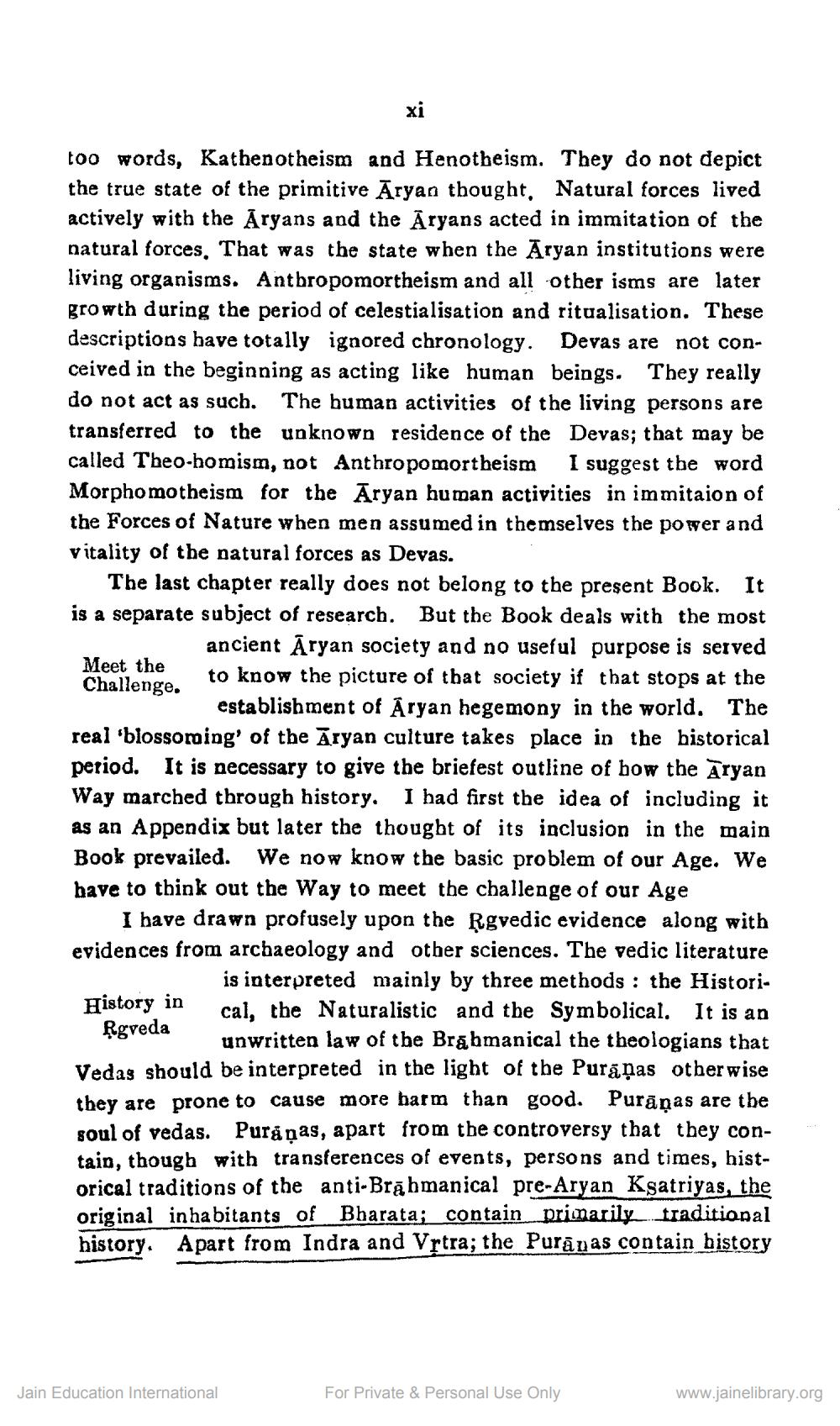________________
too words, Kathenotheism and Henotheism. They do not depict the true state of the primitive Āryan thought, Natural forces lived actively with the Aryans and the Āryans acted in immitation of the natural forces, That was the state when the Āryan institutions were living organisms. Antbropomortheism and all other isms are later growth during the period of celestialisation and ritualisation. These descriptions have totally ignored chronology. Devas are not conceived in the beginning as acting like human beings. They really do not act as such. The buman activities of the living persons are transferred to the unknown residence of the Devas; that may be called Theo-homism, not Anthropomortheism I suggest the word Morphomotheism for the Aryan human activities in immitaion of the Forces of Nature when men assumed in themselves the power and vitality of the natural forces as Devas.
The last chapter really does not belong to the present Book. It is a separate subject of research. But the Book deals with the most
ancient Āryan society and no useful purpose is served Meet the Challenge.
to know the picture of that society if that stops at the
establishment of Aryan hegemony in the world. The real blossoming' of the Aryan culture takes place in the historical period. It is necessary to give the briefest outline of how the Aryan Way marched through history. I had first the idea of including it as an Appendix but later the thought of its inclusion in the main Book prevailed. We now know the basic problem of our Age. We have to think out the way to meet the challenge of our Age
I have drawn profusely upon the Rgvedic evidence along with evidences from archaeology and other sciences. The vedic literature
is interpreted mainly by three methods : the HistoriHistory in cal, the Naturalistic and the Symbolical. It is an
Rgveda unwritten law of the Brahmanical the theologians that Vedas should be interpreted in the light of the Puranas otherwise they are prone to cause more harm than good. Purāņas are the soul of vedas. Puráņas, apart from the controversy that they contain, though with transferences of events, persons and times, historical traditions of the anti-Brahmanical pre-Aryan Ksatriyas, the original inhabitants of Bharata; contain primarily traditional history. Apart from Indra and Vrtra; the Purānas contain bistory
Jain Education International
For Private & Personal Use Only
www.jainelibrary.org




